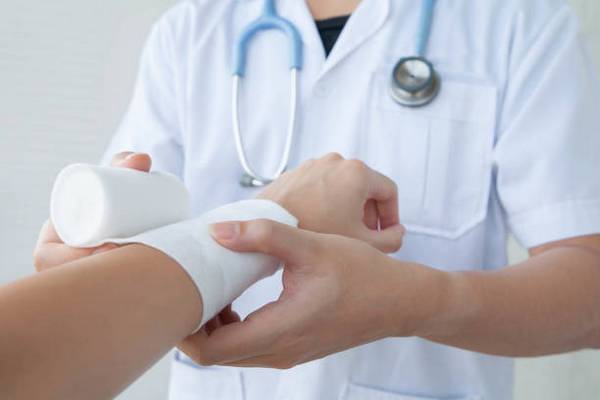Definition of Burn Patient:
According to WHO (world health organization), burn may be defined as “A burn is an injury to the skin or other organic tissue primarily caused by heat or due to radiation, radioactivity, electricity, friction or contact with chemicals. Skin injuries due to ultraviolet radiation, radioactivity, electricity or chemicals, as well as respiratory damage resulting from smoke inhalation, are also considered to be burns”.

Buns may be defined as injuries resulting from the application of dry heat (e.g. flame and heated solid substances) or chemical substances to the external or internal surfaces of the body resulting in more or less destruction of the tissues.
Damage to the skin or other body parts caused by extreme heat, flame, contact with heated objects, or chemicals. Burn depth is generally categorized as first, second, or third degree.
Burns can be very painful and may cause:
- Red Or Peeling Skin,
- Blisters,
- Swelling,
- White or Charred Skin.
Definition of Scalds:
Scald is a form of thermal burn injury resulted from heated fluids such as boiling water or steam. Most scalds are considered first or second degree. Burns, but third degree burns can result, especially with prolonged contact.
Scalds may be defined as injuries produced by the application of moist heat (e.g. a liquid at or near its boiling point or in its gaseous form such as steam) to the body.
Nursing Management of Burn Patient:
A. Initial Assessment:
- History taking: Age of patient, time of burn, types of burn, site of burn, possibility of smoke inhalation.
- Physical examination:
- Assessment of vital signs: pulse, BP, temperature, respiratory rate.
- Assessment of extent of burn by rule of nine: (please see below).
- Assessment of depth, degree of burn: Partial thickness or full 1st degree, 2nd degree, 3rd degree.
B. Initial management:
The principle of managing an acute burn injury is the same as in any acute trauma case:
- A – Airway control.
- B- Breathing and ventilation
- C- Circulation
- D- Disability
- E- Exposure with environmental control.
- F- Fluid resuscitation
- Analgesic
- Antibiotic
C. Fluid replacement:
In 1st 24 hours: Crystalloid solution.
Dose:
- The amount of fluid volume in ml 1 24 hour= 3ml/kg body wt/ % burnt surface are.
- Adult: 4ml/kg/ percent of burned surface area
- Child: 3ml/kg/percent of burned surface area.
Amount:
- Half of fluid is given in 1 8 hours.
- One fourth of Fluid is given in 2nd 8 hours.
- One fourth of Fluid is given in 3rd 8 hours.
In 2nd 24 hours: colloid solution added with crystalloid solution -plasma, albumin, dextran.
Dose: 0.35- 1 ml/kg/percent of burned surface area.
Route: Through central venous line by central venois catheter. E.g. cubital-fossa, supră-clavicular fossa, groin.
Example:
If weight is 70 kg and burn is 30%:
Total fluid needed = 4*70*3Oml -8400ml
1st 8 hours = 4200ml, 2nd 8 hours = 2100 ml, 3rd 8 hours = 2100 ml
- Blood transfusion (in children when burn is> 25% and in adult 25-30%) or when more than 25% blood volume is lost in adult & in children when 10-25% blood volume is lost.
- IV fluid is given in case of children: 10% burn & in adult: >25% burn.
D. Local treatment:
- Strict asepsis – local antiseptic cream (1% silver sulphadiazine),
- Clean room with temperature 75-8OF & low humidity,
- No dressing,
- Skin grafting: In full thickness burn.

Maria Khatun Mona is a Founder and Editor of Nursing Exercise Blog. She is a Nursing and Midwifery Expert. Currently she is working as a “Senior Staff Nurse” at “Dinajpur Medical College Hospital”, Bangladesh. She has great passion in writing different articles on Nursing and Midwifery. Mail her at “maria.mona023@gmail.com”
